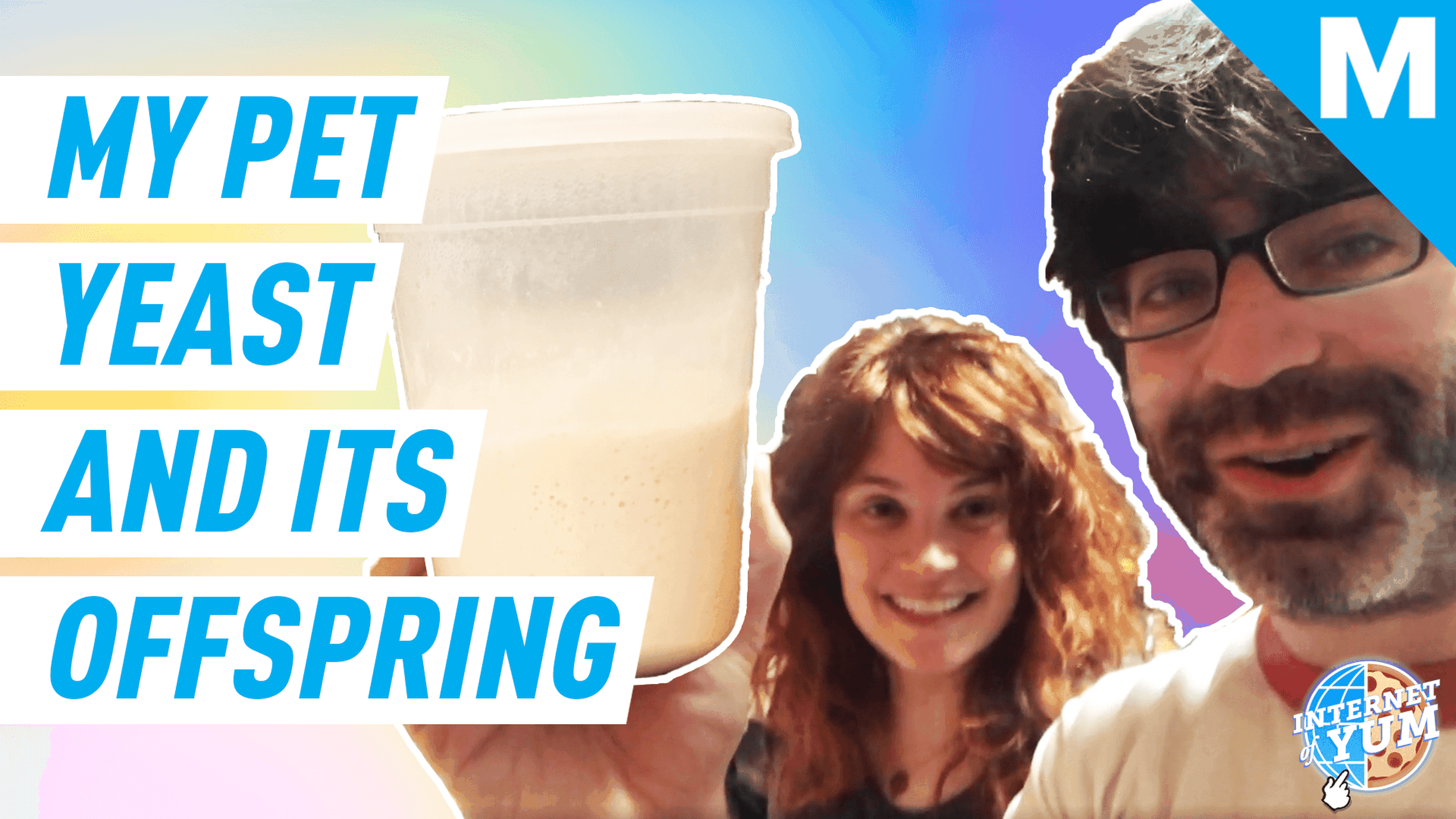
Internet of Yum digs into all the things that make us drool while we’re checking our feeds.
The coronavirus came and the bakers rose to take over social media. Or so it seems as our feeds are filled with people baking sourdough bread and naming their yeast starters these days.
But like with every new trend, there are always those who did it way before it was cool. In this case, we’re talking about those bread lovers who’ve been using the same yeast starter for years, decades even. Perhaps the starter was passed down from generation to generation; it’s the one their great-great-great-great-grandma used when Instagram was just people sharing tintype photos.
Sudeep Agarwala, a yeast scientist at Ginkgo Bioworks, is here to burst their bubble, though.
“The yeast that you have in there is not the same yeast from a hundred years ago.”
“This is where I become the asshole scientist because I say, ‘Listen I know you’ve had the starter for a hundred years. The yeast that you have in there is not the same yeast from a hundred years ago. Because every time you change water…every time you change flour…it changes. I guarantee you, it got too hot in that jar at least once over the past century and you killed off all the yeast in there. I’m so sorry, but these sourdough starters are not the same ones that your great grandparents brought over to California.'”
That wasn’t all Agarwala shared with us. He may joke that he can be an “asshole scientist,” but we found him and his yeast facts delightful. Here’s some more interesting information about yeast for all the sourdough obsessives out there, both old and new.
1) Yeast’s origin
“Yeast is a fungus that lives on the outside of fruit, wheat, and lentils that takes sugar and converts it into carbon dioxide, which is how you get those fluffy loaves of bread.” The earliest evidence we have of humans using technology to work with yeast is from 10,000 BCE.
2) Different genes
“The genes that are essential for life in one strain of yeast can be wildly different in another strain of yeast. That result is as shocking as if saying that, you require a specific muscle in order to be able to speak but if you got rid of that muscle in my body, I’d still speak perfectly fine. It is absolutely astounding that the diversity in yeast that we are talking about, these yeasts are almost completely foreign but they mate together, they live their lives together.”
Sourdough starter is the new tamagotchi.
Have you fed yours today?— Jester D is for Distance (@JustMeTurtle) May 5, 2020
3) Human cell lookalikes
“Yeast cells are fungal cells, but those fungal cells have a lot of properties that look like human cells. Which allowed us to really think about the use of yeast in understanding medicine.”
it’s happened. after almost 2 months of somehow magically avoiding it, we have been gifted a sourdough starter pic.twitter.com/6sqva6JouI
— grape minds ride a bike (@hanjpeg) May 7, 2020
4) Yeast diversity
“The variations in the types of yeast you can get are practically infinite. A yeast starter in New Jersey will be different than a yeast starter in Boston and different than a yeast starter in San Francisco or Mexico City or Europe or China. Different types of yeast collected from different places have different properties and different behaviors. Different yeasts look as different from each other as human beings do. Yeast that live on lentils behave very differently than the yeast that are used to brew sake, for example.”
Looking for a reputable sitter for my sourdough starter for July. Rate negotiable. Serious inquires only.
— mayor yeet (@Sam_Rose1) May 6, 2020
5) Yeast is a technology
“Bread is just the beginning. We are now making meatless products with yeast. We have been using yeast to produce our medicines. Yeast is an integral part of how we are going to be solving [COVID-19] processes. The way we understand cancer. The way we understand aging, that all comes from yeast.”
6) Agarwala is loving this
“This is only part one of my dastardly plan to get America to fall in love with yeast genetics.”
